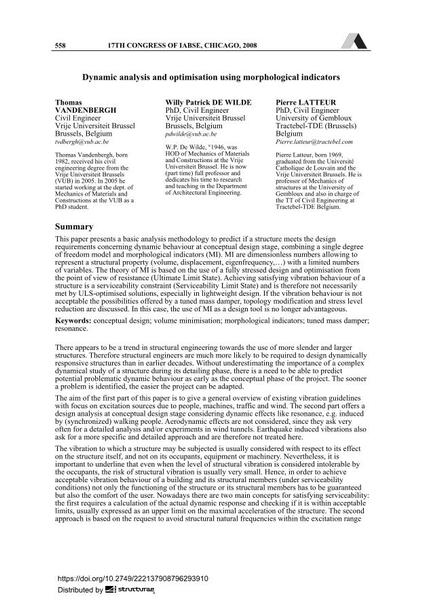Dynamic analysis and optimisation using morphological indicators

|
|
|||||||||||
Bibliographic Details
| Author(s): |
Thomas Vandenbergh
Willy Patrick De Wilde Pierre Latteur |
||||
|---|---|---|---|---|---|
| Medium: | conference paper | ||||
| Language(s): | English | ||||
| Conference: | 17th IABSE Congress: Creating and Renewing Urban Structures – Tall Buildings, Bridges and Infrastructure, Chicago, USA, 17-19 September 2008 | ||||
| Published in: | IABSE Congress Chicago 2008 | ||||
|
|||||
| Page(s): | 558-559 | ||||
| Total no. of pages: | 10 | ||||
| Year: | 2008 | ||||
| DOI: | 10.2749/222137908796293910 | ||||
| Abstract: |
This paper presents a basic analysis methodology to predict if a structure meets the design requirements concerning dynamic behaviour at conceptual design stage, combining a single degree of freedom model and morphological indicators (MI). MI are dimensionless numbers allowing to represent a structural property (volume, displacement, eigenfrequency,…) with a limited numbers of variables. The theory of MI is based on the use of a fully stressed design and optimisation from the point of view of resistance (Ultimate Limit State). Achieving satisfying vibration behaviour of a structure is a serviceability constraint (Serviceability Limit State) and is therefore not necessarily met by ULS-optimised solutions, especially in lightweight design. If the vibration behaviour is not acceptable the possibilities offered by a tuned mass damper, topology modification and stress level reduction are discussed. In this case, the use of MI as a design tool is no longer advantageous. |
||||
| Keywords: |
resonance conceptual design tuned mass damper volume minimisation morphological indicators
|
||||
